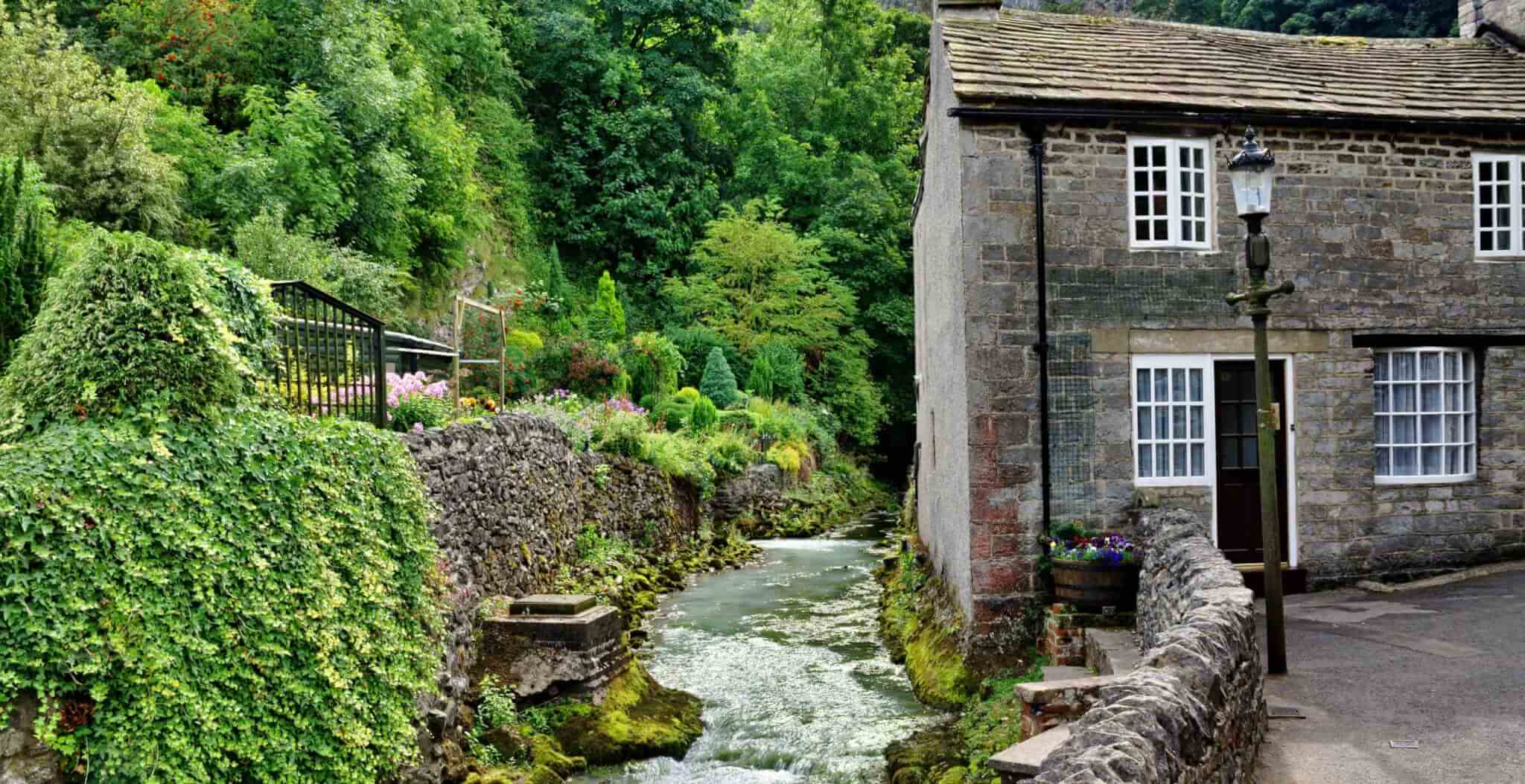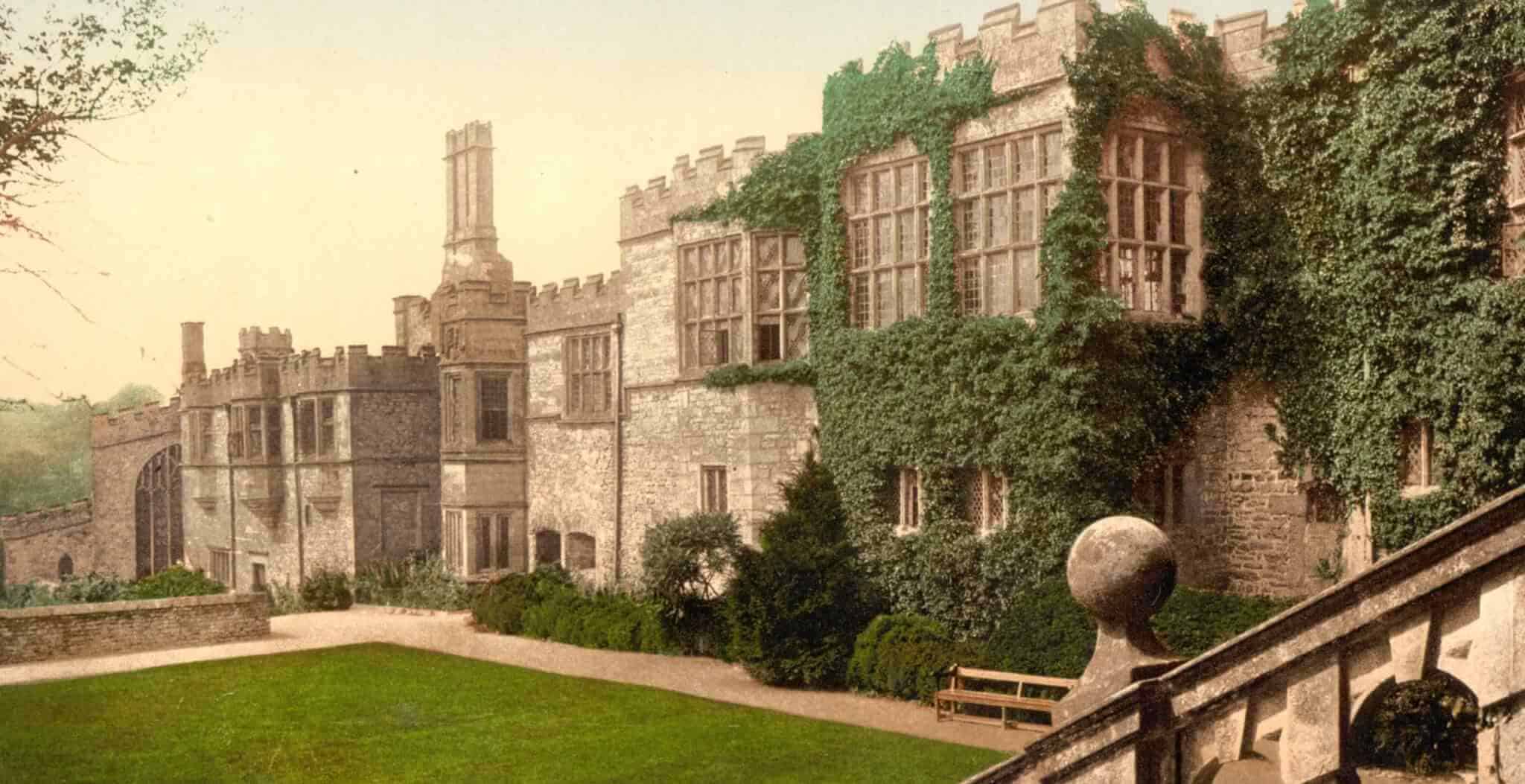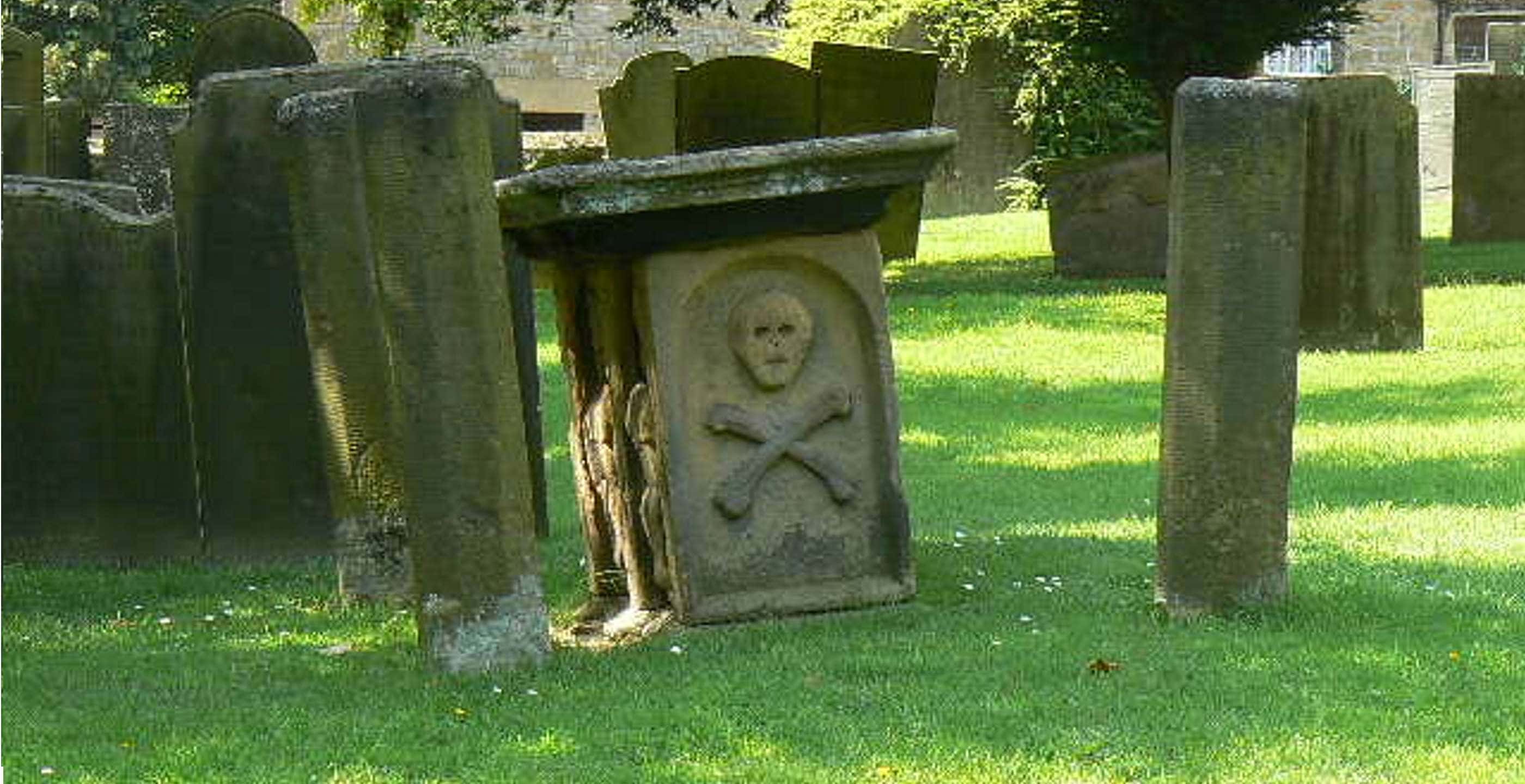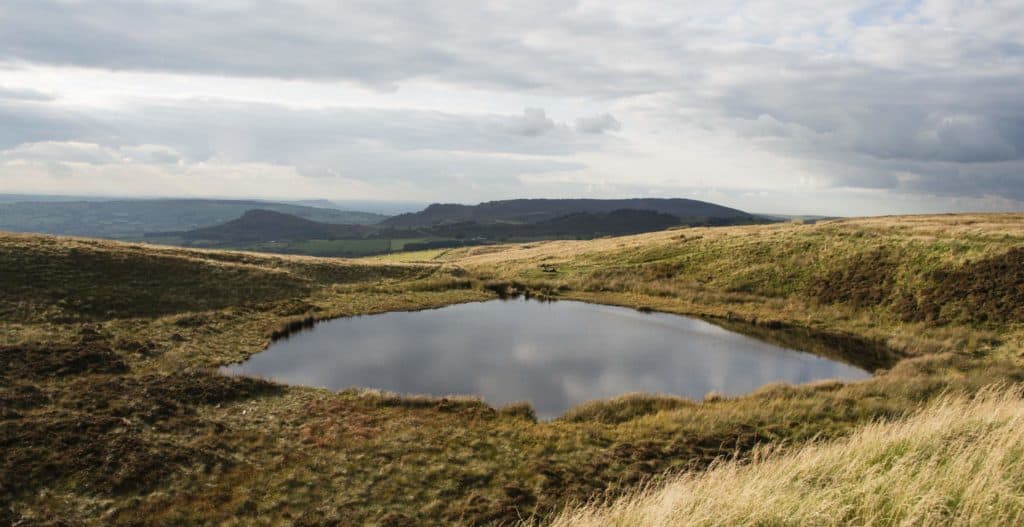Castleton is a popular tourist village in the heart of the Derbyshire Peak District National Park. The village is renowned for epitomising the quintessentially classic English hamlet, for its wealth of local history, and for being a major Peak District walking centre.
Castleton’s position as a major walking centre is in part due to the fact that it is surrounded on three sides by steep hills, including the famous Mam Tor (literally translating to Heights of the Mother) standing at over 500 meters (1,690 ft). Mam Tor also makes up a part of the Great Ridge, a 3km walk which separates the vales of Edale and Castleton.
Castleton itself was first settled by the Celts, and the ruins of a Celtic hill fort are still able to be found on the nearby hill of Mamtor. As the Celts were superseded by the Romans, the area became prosperous through lead mining. In fact, Odin Mine, one of the oldest lead mines in England can be found near Castleton. The mine, now designated a Scheduled Ancient Monument, is thought to have been used by the Romans, Saxons and Danes with production at the mine stopping as late as 1869.
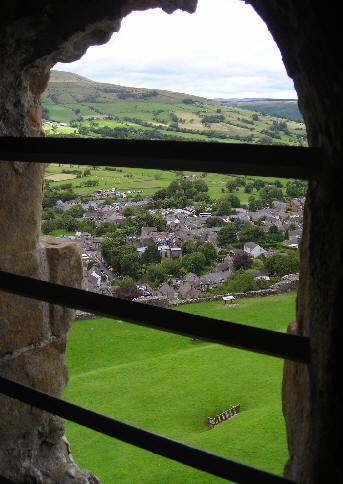
Castleton was also mentioned in the Domesday Book in 1086, albeit under the name Pechesers [literally translated as Peaks Arse]:
In fact, William Peveril was allegedly an illegitimate son of William the Conqueror, with the castle being bequeathed to him in 1086. The castle can be found overlooking the village of Castleton, with the square keep and curtain walls still standing.
Castleton is also well known for the four underground show caves that surround the village. Blue John Cavern, Speedwell Cavern, Treak Cliff Cavern and Peak Cavern are all worth a visit for their individual features.
Blue John and Treak Cliff Caverns are most famous for their abundance of the treasured yellow and blue fluorspar called Blue John. Mined for centuries, the industry peaked in the late 1770’s when 16 mines in the area were operational. Blue John stone is still actively mined in both caverns, albeit away from the visitor trails!
The third cave is known as Peak Cavern, and is the source of the river that flows through Castleton. Unlike the other caves in the area, Peak Cavern is almost completely natural. Perhaps more interestingly, Peak Cavern was the home to the last of Britain’s troglodytes who lived in houses within the cave’s mouth. Whilst the troglodytes made their living from rope making, the deeper sections of the cave were inhabited by bandits. In fact, Peak Cavern is supposedly where the secret thieves’ cant language was created when a secret meeting occurred between the leader of the Rogues and the King of the Gypsies.
More recently, Peak Cavern has had somewhat of an identity crisis. Originally called “Devil’s Arse” due to the flatulence-like sounds that emanate from within the caverns, the name was changed in 1880 to “Peak Cavern” in order to avoid causing the then visiting Queen Victoria any offence. More recently however, the cave has been promoted using its more traditional (and more vulgar!) older name. One point of note about Peak Cavern though; because of the river that runs through it, it is closed in winter time due to risk of flooding.
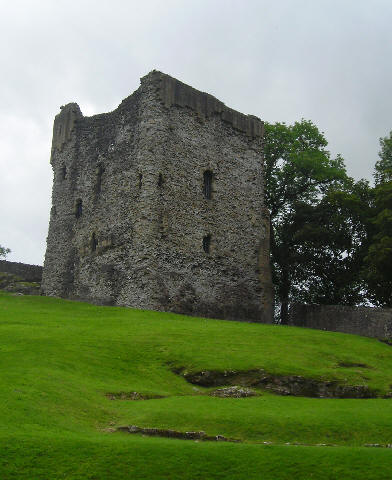
The final of the four caves is Speedwell Cavern, unique in the fact that it can only be entered via boat! It is also famous for what has been dubbed the “Bottomless Pit”, an extremely deep vertical shaft originally estimated to be 150 metres deep. Overtime though, and through miners dumping their rock spoil down it, the shaft is now estimated to be just 35 metres deep.
Finally, any mention of Castleton wouldn’t be complete without a reference to the world famous “Garland Day” (also known as Oak Apple Day) celebrated every year on the 29th May. May 29th is the anniversary of the Battle of Worcester when, escaping from the pursuing Roundheads, Charles II hid in an oak tree.
During the ceremony, the Garland King and Queen parade around the village on horseback wearing 17th century dress, with the king wearing a garland so big that it completely covers him from the waist up! Whilst on parade the King and Queen stop at every pub around the village, ending up in the Main Square where the garland is hoisted up and placed upon the top of the church tower.
The nearest railway station to Castleton is a couple of miles away in Hope, an easy walk, however a bus runs between the two during the summer months. Please try our UK Travel Guide for further assistance.
